Mesannepada
Videos
Page
Mesannepada (Sumerian: 𒈩𒀭𒉌𒅆𒊒𒁕, Mesannipàdda [MES-AN-NE2-PAD3-DA]), Mesh-Ane-pada or Mes-Anne-pada ("Youngling chosen by An") was the first king listed for the First Dynasty of Ur (c. 26th century BC) on the Sumerian king list. He is listed to have ruled for 80 years, having overthrown Lugal-kitun of Uruk: "Then Unug (Uruk) was defeated and the kingship was taken to Urim (Ur)". In one of his seals, found in the Royal Cemetery at Ur, he is also described as king of Kish.

Cylinder seal impression of "Mesanepada, king of Kish", excavated in the Royal Cemetery at Ur (U. 13607). The seal shows Gilgamesh and the mythical bull between two lions, one of the lions biting him in the shoulder. On each side of this group appears Enkidu and a hunter-hero, with a long beard and a Kish-style headdress, armed with a dagger. Under the text, four runners with beard and long hair form a human Swastika. They are armed with daggers and catch each other's foot.

Image: Seal impression of Mesanepada, king of Kish
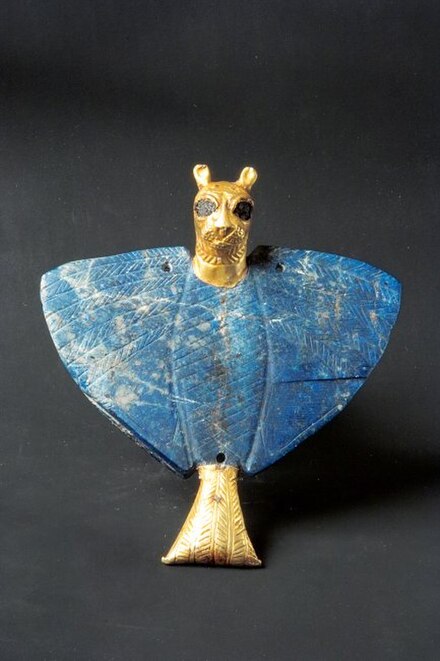
The "Lion eagle", another object found in the dedication deposit of the "Treasure of Ur".
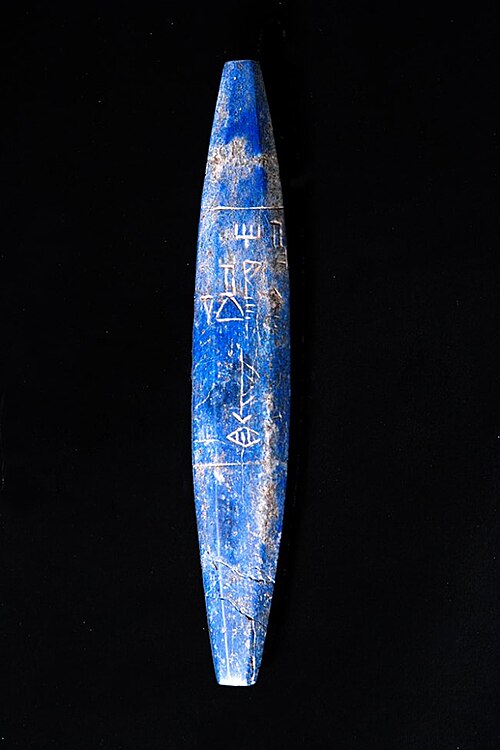
The lapis lazuli bead from Mari, National Museum of Damascus, Syria ("King of Ur", 𒈗𒋀𒀊𒆠 side).
First Dynasty of Ur
Videos
Page
The First Dynasty of Ur was a 26th-25th century BCE dynasty of rulers of the city of Ur in ancient Sumer. It is part of the Early Dynastic period III of the history of Mesopotamia. It was preceded by the earlier First Dynasty of Kish and the First Dynasty of Uruk.
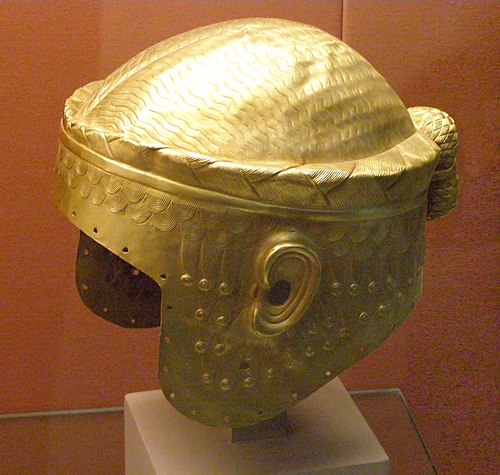
Golden helmet of Meskalamdug, possible founder of the First Dynasty of Ur, circa 2500 BCE.
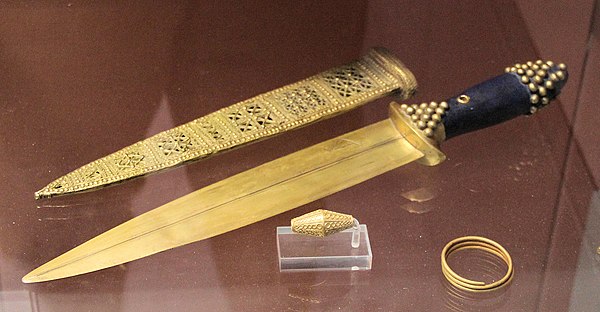
Gold objects from tomb PG 580, Royal Cemetery at Ur.
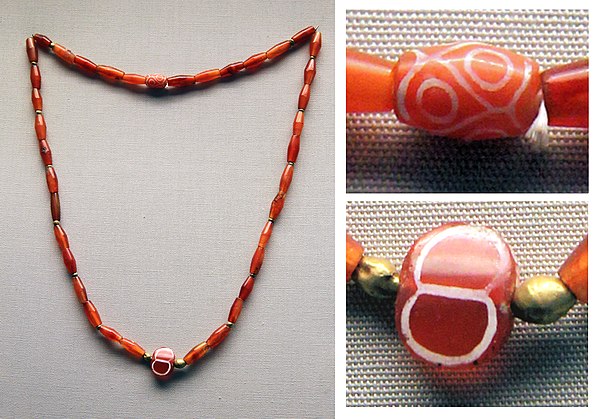
The etched carnelian beads in this necklace from the Royal Cemetery dating to the First Dynasty of Ur were probably imported from the Indus Valley. British Museum.
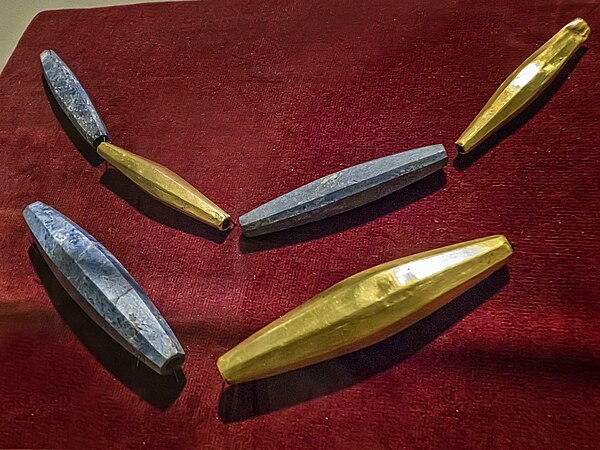
Lapis lazuli was likely imported from the Badakhshan area of Afghanistan.